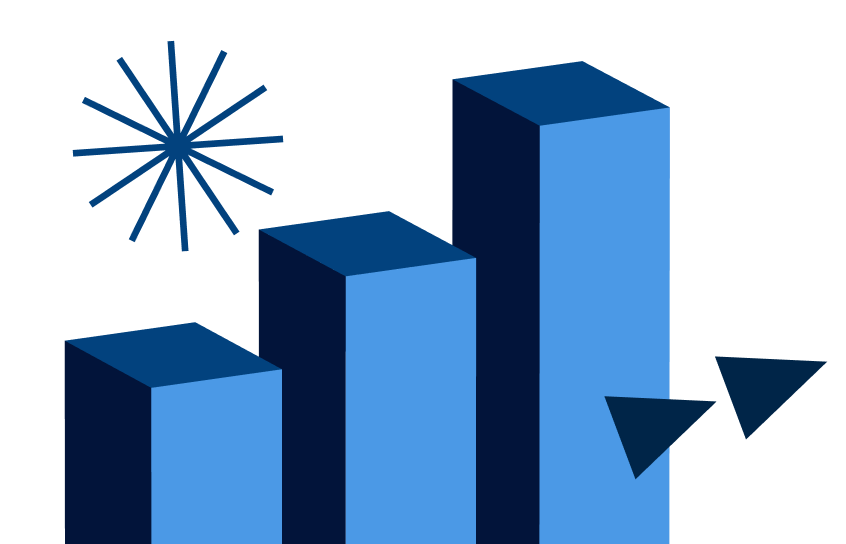What Is an ETF? Meaning, How They Work
If you want the ease of stock trading but diversification benefits of mutual funds, ETFs combine the best of both.

Many, or all, of the products featured on this page are from our advertising partners who compensate us when you take certain actions on our website or click to take an action on their website. However, this does not influence our evaluations. Our opinions are our own. Here is a list of our partners and here's how we make money.
The investing information provided on this page is for educational purposes only. NerdWallet, Inc. does not offer advisory or brokerage services, nor does it recommend or advise investors to buy or sell particular stocks, securities or other investments.
ON THIS PAGE
Exchange-traded funds are a type of investment fund that offers the best attributes of two popular assets: They have the diversification benefits of mutual funds while mimicking the ease with which stocks are traded.
What is an ETF?
An exchange-traded fund (ETF) is a basket of investments made up of assets such as stocks or bonds, which allows you to invest in many securities all at once. They often have lower fees than other types of funds and are traded more easily, too.
As with all financial products, ETFs aren’t a one-size-fits-all solution. It's important to evaluate them on their own merits, including management costs and commission fees (if any), how easily you can buy or sell them, how they fit into your existing portfolio and their investment quality.
How do ETFs work?
Exchange-traded funds work like this: The fund provider owns the underlying assets, designs a fund to track their performance, and then sells shares in that fund to investors.
Shareholders own a portion of an ETF, but they don’t own the underlying assets in the fund. Even so, investors in an ETF that tracks a stock index may get dividend payments for any dividend stocks in the index.
While ETFs are designed to track the value of an underlying asset or index, they trade at market-determined prices that typically differ from the value of that asset. Longer-term returns for an ETF will vary from those of its underlying assets due to certain expenses.
Just like stocks, ETFs can be bought or sold at any time throughout the trading day (9:30 a.m. to 4 p.m. Eastern time), letting investors take advantage of intraday price fluctuations. This differs from mutual funds, which can only be purchased at the end of the trading day for a price that is calculated after the market closes.
» Ready to learn more? How to invest in ETFs
NerdWallet rating 4.8 /5 | NerdWallet rating 4.6 /5 | NerdWallet rating 4.5 /5 |
Fees $0 per online equity trade | Fees $0 | Fees $0 per trade |
Account minimum $0 | Account minimum $0 | Account minimum $0 |
Promotion None no promotion available at this time | Promotion Earn up to $10,000 when you transfer your investment portfolio to Public. | Promotion Get up to $700 when you open and fund a J.P. Morgan Self-Directed Investing account with qualifying new money. |
Pros and cons of ETFs |
|---|
✔️ Diversification: While it’s easy to think of diversification in terms of broad market verticals — like stocks or bonds — ETFs also allow investors to diversify across horizontals, like industries. It would take a lot of money and effort to buy all the components of a particular basket, but with the click of a button, an ETF delivers those benefits to your portfolio. |
✔️ Transparency: Anyone with internet access can search the price activity for a particular ETF on an exchange. In addition, a fund’s holdings are disclosed to the public each day, whereas this happens monthly or quarterly with mutual funds. This transparency allows you to keep a close eye on what you're invested in. |
✔️ Tax benefits: ETFs have two major tax advantages: 1. If you invest in a mutual fund, you may have to pay capital gains taxes throughout the lifetime of your investment, whereas most ETFs only incur capital gains taxes when you sell the investment. 2. As mutual fund managers are actively buying and selling investments, investors may be exposed to both long- and short-term capital gains tax. If you're invested in an ETF, you get to decide when to sell, making it easier to avoid those higher short-term capital gains tax rates. |
✖️ Trading costs: ETF costs may not end with the expense ratio. Because ETFs are exchange-traded, they may be subject to commission fees from online brokers. Many brokers have decided to eliminate their ETF commissions, but not all have. |
✖️ Potential liquidity issues: As with any security, you’ll be at the whim of the current market prices when it comes time to sell, but ETFs that aren’t traded as frequently can be harder to unload. |
✖️ Risk that the ETF will close: The primary reason this happens is that a fund hasn’t brought in enough assets to cover administrative costs. The biggest inconvenience of a shuttered ETF is that investors must sell sooner than they may have intended, possibly at a loss. |
Types of ETFs
Exchange-traded funds may trade like stocks, but under the hood, they more closely resemble mutual funds and index funds, which can vary greatly in terms of their underlying assets and investment goals.
Below are a few common types of ETFs. These ETFs aren’t categorized by management type (passive or active) but rather by the types of investments held within the ETF.
Sector ETFs: The U.S. stock market is divided into 11 sectors, and each is made up of companies that operate within that arena. Sector ETFs let you invest in specific companies within those sectors.
Commodity ETFs: Commodities are raw goods that can be bought or sold, such as gold, coffee and crude oil. Commodity ETFs let you bundle these securities into a single investment.
Stock ETFs: These comprise stocks and are usually meant for long-term growth. While typically less risky than individual stocks, they often carry slightly more risk than some other ETFs.
Exchange-traded notes (ETNs): ETNs are technically not ETFs but are often confused with them due to their similar names and characteristics. ETNs often track commodities, bonds, derivatives or more exotic assets.
Bond ETFs: Unlike individual bonds, bond ETFs don’t have a maturity date, so the most common use for them is to generate regular cash payments. Bond ETFs can be an excellent, lower-risk complement to stock ETFs.
International ETFs: Foreign stocks are widely recommended for building a diverse portfolio. International ETFs are an easy, and typically less risky, way to find these foreign investments.
Bitcoin ETFs: Bitcoin ETFs directly track the price of Bitcoin and can be bought and sold directly in brokerage accounts.
Crypto ETFs: ETFs that offer exposure to other cryptocurrencies are still limited. Most crypto ETFs hold futures contracts or the stock of companies that either deal in or invest in the crypto markets.
Leveraged ETFs: Leveraged ETFs are funds that track an existing index. Rather than match that index’s returns, they aim to increase them by two or three times. This strategy makes leveraged ETFs riskier than other types of ETFs.
How to choose the right ETFs for your portfolio
It's important to be aware that while costs generally are lower for ETFs, they also can vary widely from fund to fund, depending on the issuer as well as on complexity and demand. Even ETFs tracking the same index have different costs.
Most ETFs are passively managed investments; they simply track an index. Some investors prefer the hands-on approach of mutual funds, which are run by a professional manager who tries to outperform the market. There are actively managed ETFs that mimic mutual funds, but they come with higher fees. Consider your investing style before making a purchase.
The explosion of this market has also seen some funds come to market that may not stack up on merit — borderline gimmicky funds that take a thin slice of the investing world and may not provide much diversification. Just because an ETF is cheap doesn’t necessarily mean it fits with your broader investment thesis.
Compare ETFs with other investments
When comparing exchange-traded funds with other investments, ETFs stand out in a number of ways. Lower investment costs, better diversification and an increasing number of options are just a few of the benefits of ETFs.
Here are a few of the key differences between ETFs, mutual funds and stocks.
Exchange-traded funds (ETFs) | Mutual funds | Individual stocks | |
|---|---|---|---|
Fees | Average equity ETF expense ratio: 0.15%. | Average equity fund expense ratio: 0.42%, plus any additional fees. | Commission fee: Often $0, but can be as high as $5. |
How to buy | Traded during regular market hours and extended hours. | At the end of the trading day after markets close. | Traded during regular market hours and extended hours. |












